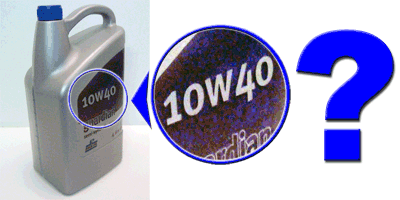
What do the letter and numbers mean on motorcycle oil bottles (e.g. 10w40)?
As well as being defined by their type (e.g. Synthetic, Semi-Synthetic or Mineral), motorcycle engine oil is also defined by it’s thickness (or viscosity). The viscosity rating is normally displayed on the oil container by a series of 2 numbers separated by a letter (e.g. 10w40 or 20w50).
This grade is also known as the SAE grade of the oil (e.g. SAE 10w40). SAE stands for the Society of Automotive Engineers and they are one of the the bodies responsible for publishing the standards that govern Automotive Oils (2 other bodies that grade oils are API, American Petroleum Institute and JASO, Japanese Automotive Standards Organization).
Breaking down the numbers and letter-10w40…..
10w: The first number and letter (in this example, 10w) is the thickness of the oil when tested at it’s lowest operating temperature (oil’s are tested at -25 c to get this first number). The ‘W’ stands for ‘Winter’ or the viscosity of the oil at colder temperatures (‘W’ does NOT stand for weight as many people seem to think!).
The ‘W’ ratings are to tell how the oil will perform from a cold start (when the engine is colder).
Basically, the higher the first number, the thicker the oil will be at colder temperatures (so a 20w50 oil would be thicker when cold than a 10w40 oil).
40: The second number is the oil’s thickness at higher operating temperatures or when the engine has been run for a while and warmed up (oil’s are tested at 100 c to get this number).
What the numbers actually stand for: The oil viscosity (or thickness) is measured in Centistokes.
‘Centistokes’ are named after the Victorian engineer Sir George Stokes, who timed ball bearings as they sank through oil to get this measurement (the modern equipment used to test oil viscosity is a bit more complex nowadays……).


Leave a Reply